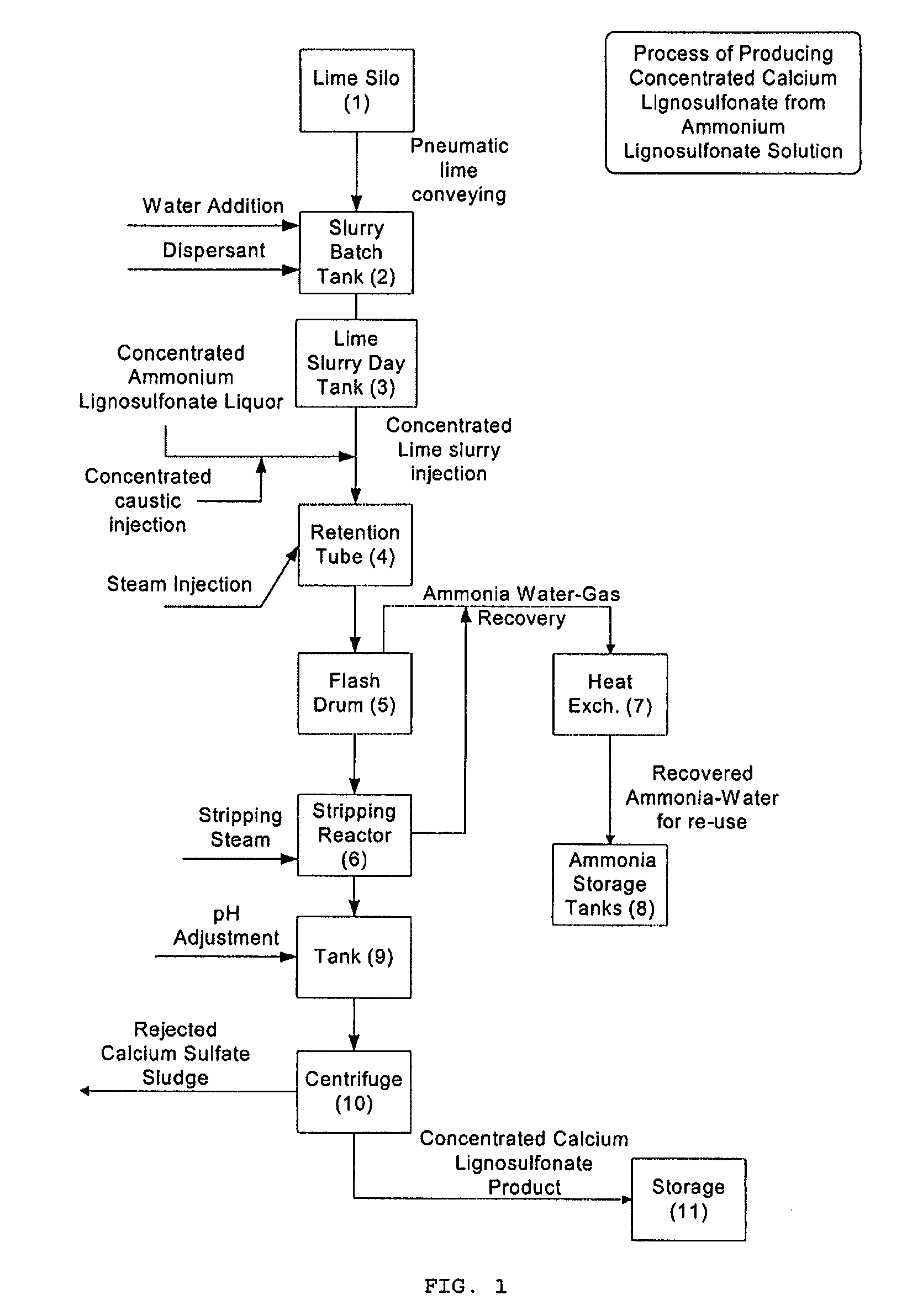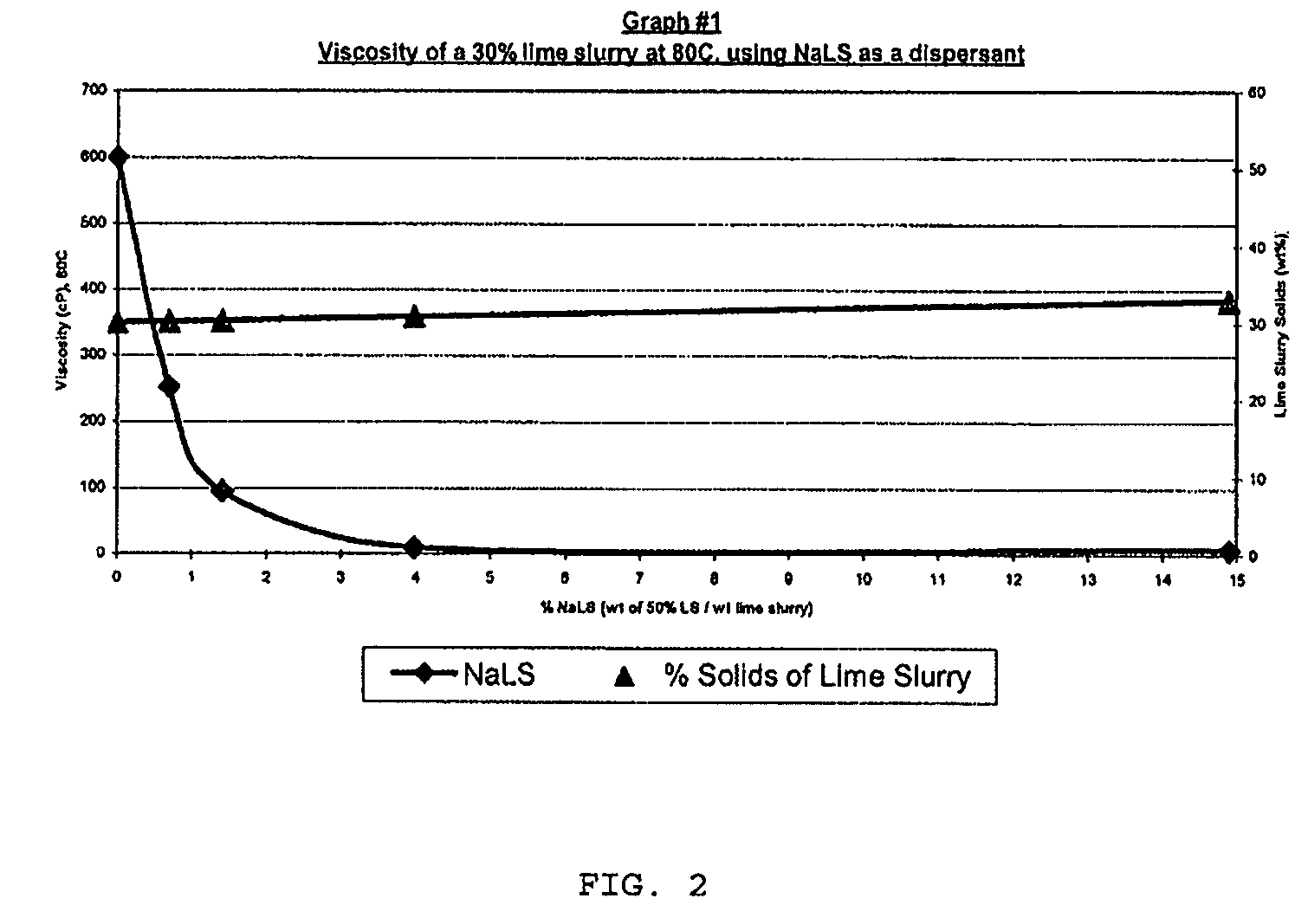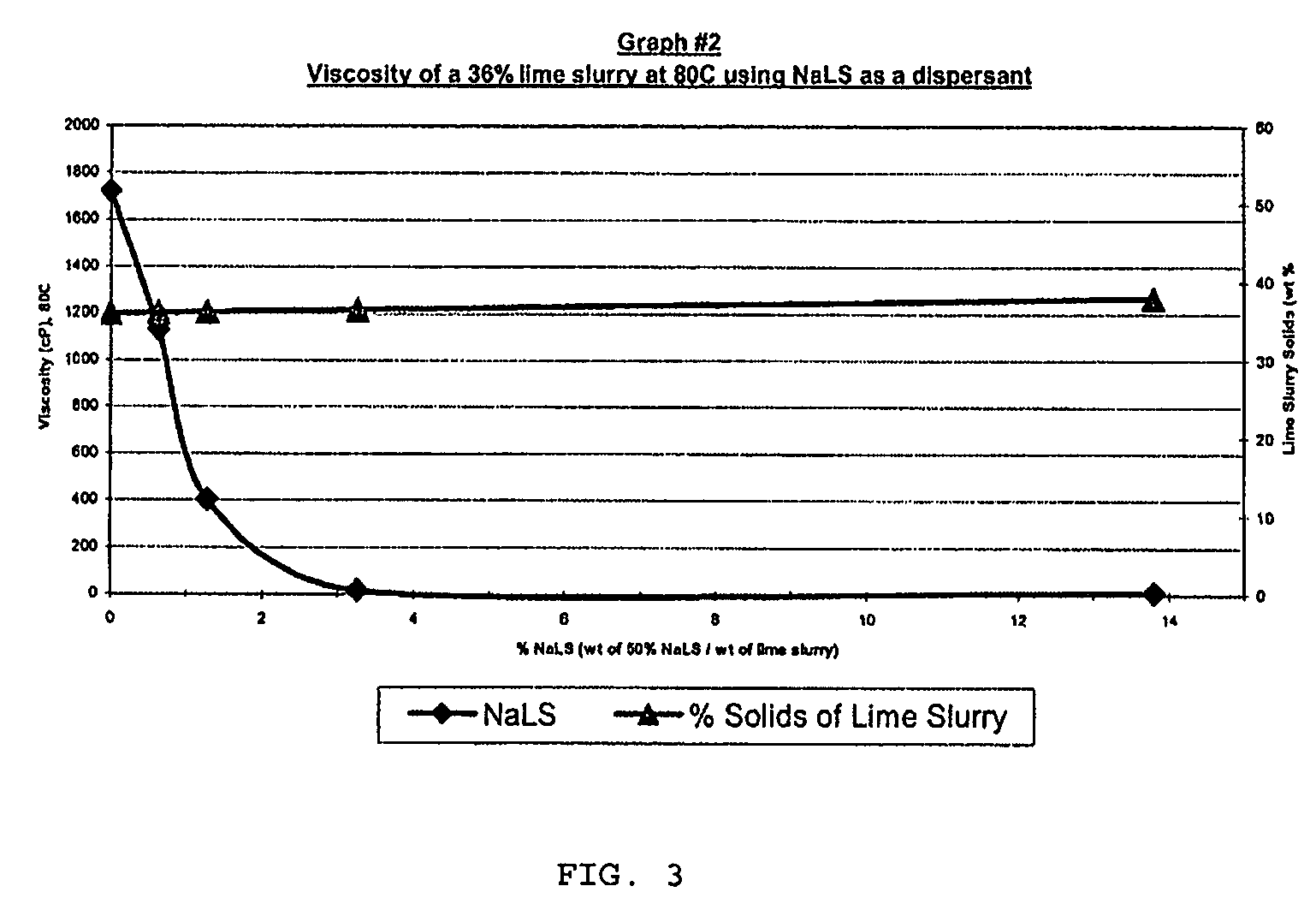Higher than 30% concentration lime slurries, preparation and uses thereof
a technology of lime slurries and compositions, applied in the field of pulp and paper industry, can solve the problems of insufficient concentration for many applications, undesirable effects, limited use of such a weak liquor, etc., and achieve the effects of reducing the viscosity of the final product, reducing the crosslinking of divalent calcium ions, and improving the separation of gypsum from the liquid
- Summary
- Abstract
- Description
- Claims
- Application Information
AI Technical Summary
Benefits of technology
Problems solved by technology
Method used
Image
Examples
example 1
[0105]Graphs 1,2 and 3 illustrate the effect of adding Sodium lignosulfonate dispersant to lime slurry. In these examples, 50% w / w sodium lignosulfonate solution was added to 80° C. water. After dilution, dry hydrated lime was added to make up lime slurry solutions from 30 to 42% w / w (dry lime / lime+water).
[0106]A 4% addition of 50% sodium lignosulfonate reduces the viscosity of a 30% w / w solids lime slurry from 600 to 10 cP at 80 C. (Graph #1).
[0107]A 3.3% addition of 50% w / w sodium lignosulfonate reduces the viscosity of a 36% w / w solids lime slurry from 1720 to 15 cP at 80° C. (Graph #2).
[0108]A 3.0% addition of 50% sodium lignosulfonate reduces the viscosity of a 42% w / w solids lime slurry from 8050 to 15 cP at 80° C. (Graph #3).
example 2
[0109]In this example, a calcium lignosulfonate (wt Ca ion / Ca+Na ions was 60%) was manufactured.
[0110]The flow chart diagram of FIG. 1 still applies to the present example.
[0111]A lime slurry was made up as in Example 1. The recipe was:
50% w / w sodium lignosulfonate11.5 wt %Dry Lime42.4 wt %Hot water46.1 wt %
[0112]The combined solids of this solution were 48.2% w / w. The viscosity was 50 cP at 65° C.
[0113]52% ammonium lignosulfonate at a temperature of 95 C was reacted with 3.3% causic (dry basis) followed by the addition of lime slurry at 11.5% w / w lime (dry basis).
[0114]In the Retention Tube and Reactor the ammonia gas is steam stripped from the liquid. Finished product calcium lignosulfonate was pH adjusted from 9.0 to 5.5 by the addition of aluminum sulphate and sulphuric acid. Addition of acid decreases the viscosity of calcium lignosulfonate. As well, the addition of acid prevents viscosity increase in finished product over time. Further, decreasing the pH to 5.5 prevents growth...
example 3
[0117]Table 1 shows performance in concrete of the products manufactured in Example 2. (60% Ca / Ca+Na ion calcium lignosulfonate) Three different samples show very good fluidity (140-150 mm), low air (2.4 to 2.5% air) and increased strength versus control that does not contain lignosulfonate.
[0118]In another example of process, a 10% Ca / Ca+Na ion, sodium lignosulfonate was manufactured by adding a dosage of 8.6% w / w dry caustic and 6.2% w / w dry lime to ammonium lignosulfonates. Table 1 shows performance in concrete of these products. Three different samples show good fluidity (120-150 mm), low air entrainment (2.4 to 2.8%) and high strength at 7 and 28 day versus control that does not contain lignosulfonate.
TABLE 1Results from concrete testing(363 kg cement / m3, 0.15% LS, w / c 0.505)AirCompressiveentrainedSlumpstrength (Mpa)Sample(vol %)(mm)7 day28 day10% Ca LS-012.812036.946.110% Ca LS-022.512537.945.410% Ca LS-032.415036.544.560% Ca LS-012.414036.745.160% Ca LS-012.515034.745.060% Ca...
PUM
| Property | Measurement | Unit |
|---|---|---|
| temperature | aaaaa | aaaaa |
| temperature | aaaaa | aaaaa |
| temperature | aaaaa | aaaaa |
Abstract
Description
Claims
Application Information
 Login to View More
Login to View More - R&D
- Intellectual Property
- Life Sciences
- Materials
- Tech Scout
- Unparalleled Data Quality
- Higher Quality Content
- 60% Fewer Hallucinations
Browse by: Latest US Patents, China's latest patents, Technical Efficacy Thesaurus, Application Domain, Technology Topic, Popular Technical Reports.
© 2025 PatSnap. All rights reserved.Legal|Privacy policy|Modern Slavery Act Transparency Statement|Sitemap|About US| Contact US: help@patsnap.com



